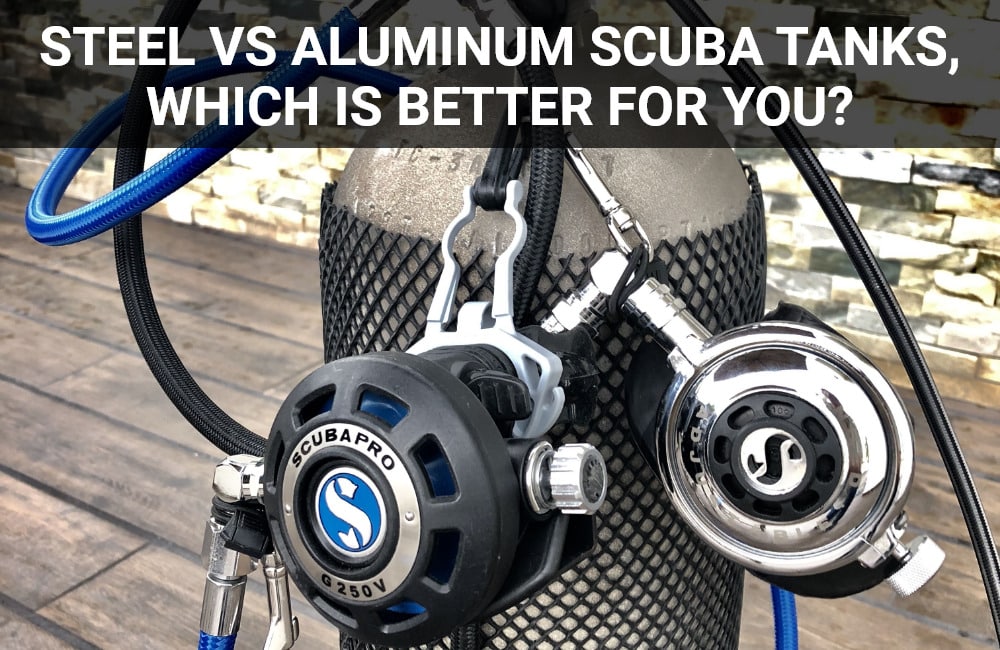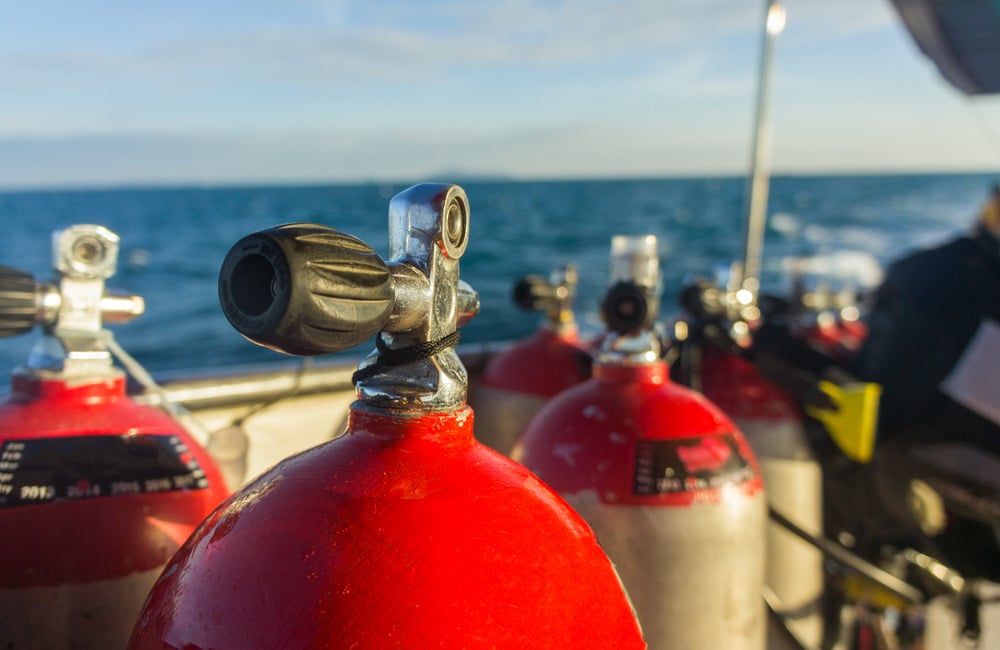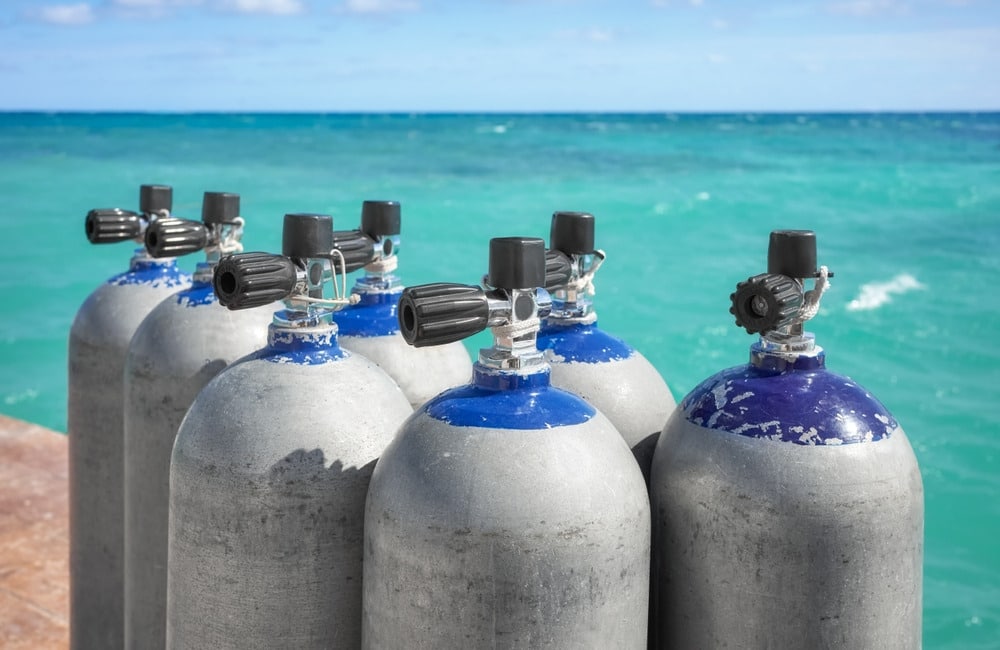Blog
Steel vs Aluminum Scuba Tanks, Which Is Better for You?
If you’re looking for the perfect combination of safety, reliability, and value on your next scuba trip, choosing between steel and aluminum tanks can be a daunting decision. With all of the different variables affecting both materials, including buoyancy characteristics and weight to fill ratios, it is difficult to determine which option best suits your individual needs.
When it comes to scuba tanks, there are two main options: steel and aluminum. Each material has its own unique advantages and disadvantages that should be considered when making a purchase. That’s where this guide comes in.
The purpose of this guide is to compare and contrast steel and aluminum scuba tanks, providing readers with the necessary information to make an informed decision. By outlining the pros and cons of each product, potential buyers can weigh the factors that matter most to them and choose the tank that best suits their needs. Ultimately, whether you opt for the durability and weight of a steel tank or the affordability and buoyancy of an aluminum tank, an outline can help guide you in the right direction.
In this blog post we will discuss all the features and benefits of each material so that you can make an informed decision when selecting either a steel or aluminum tank for your upcoming scuba dive. Read on to learn more about how these two types of tanks compare in terms of performance, cost-effectiveness, safety measures, durability, availability and more!
Steel Scuba Tanks
Steel scuba tanks are a popular choice among divers and are known for their durability and weight. These tanks are made of high-quality steel materials that are designed to withstand harsh underwater conditions. Steel scuba tanks are also very sturdy and can last for many years with proper care and maintenance. To keep your steel scuba tank in excellent condition, it’s important to regularly inspect it for any signs of damage or corrosion.
Also, store it in a dry place away from direct sunlight and saltwater to prevent any rusting. Always make sure to clean the tank after each dive and have it professionally serviced every few years. By following these simple steps, you can ensure your steel scuba tank stays in top shape and is ready for your next dive adventure.
Steel scuba tanks are a popular choice among divers due to their durability and longevity. However, these tanks also come with a few potential drawbacks that should be considered. One such drawback is the cost. Compared to their aluminum counterparts, steel tanks tend to be more expensive.
Furthermore, they are much heavier, making them unsuitable for divers who prioritize weight as a primary concern. Additionally, steel tanks are susceptible to rust, especially if not properly maintained. If rust is not addressed timely, it can cause significant damage to the tank, compromising its structural integrity. To avoid these issues, it is crucial for divers to regularly inspect their steel scuba tanks and take the necessary precautions to prevent rust buildup.
Aluminum Scuba Tanks
Aluminum scuba tanks have become increasingly popular among divers due to their affordability and versatility. They are lightweight, corrosion-resistant, and can withstand high pressure. Besides being cost-effective, they also offer greater buoyancy control compared to steel tanks.
However, proper maintenance and care is crucial to ensure their longevity and safe use. It’s important to avoid exposing them to extreme temperatures, direct sunlight, and corrosive substances. Additionally, it’s essential to inspect them regularly for corrosion, cracks, and other signs of wear and tear. By following these maintenance tips, divers can enjoy the benefits of aluminum scuba tanks for years to come.
Aluminum scuba tanks have become increasingly popular among scuba divers, thanks to their lightweight design that makes them easy to handle underwater. However, these tanks also come with a few drawbacks that make them less desirable in certain situations. One potential downside of aluminum scuba tanks is their fragility.
Unlike their steel counterparts, these tanks are more prone to denting and scratching, which can affect their structural integrity and ultimately put divers at risk. Another issue with aluminum scuba tanks is their limited capacity.
While they may be perfect for short dives, their smaller size means that they may not be suitable for longer excursions or deep dives where more air is required. As with any piece of scuba equipment, it’s essential to consider all factors before making a purchase decision and always prioritize safety above all else.
Comparing Steel and Aluminum Scuba Tanks
When choosing between steel and aluminum scuba tanks, it is important to carefully consider their respective features, benefits, and drawbacks. Steel tanks are typically more durable and can withstand higher pressure than aluminum tanks. They are also less buoyant, which can be beneficial for divers seeking greater stability underwater.
However, steel tanks are generally heavier and can be more difficult to transport, which may not be ideal for divers who frequently travel to different dive sites. Aluminum tanks, on the other hand, are lighter and more portable, making them a popular choice for divers on the go.
They are also less likely to corrode than steel tanks and can be more affordable, but they may not be as durable or long-lasting. Ultimately, the choice between steel and aluminum scuba tanks will depend on the diver’s individual needs and preferences.
When it comes to tanks, there is no one-size-fits-all solution. Different tanks are designed for different purposes, and there are certain situations in which one type of tank might be better suited than the other. For example, traditional steel tanks are durable and can withstand high pressure, making them ideal for storing liquids or gases that need to be kept under high pressure.
However, if the contents of the tank are corrosive, a fiberglass or plastic tank might be a better choice, as it is more resistant to chemical damage. Similarly, if portability is a concern, smaller plastic tanks might be more appropriate, while larger steel tanks are better suited to fixed or semi-permanent installations.
Ultimately, the best choice of tank will depend on a variety of factors, including the nature of the contents, the environment in which it will be stored, and the logistical and practical considerations of the situation at hand.
Factors to Consider When Choosing a Scuba Tank
When it comes to choosing a scuba tank, there are a variety of factors to consider, including your diving needs and budget. One of the most significant decisions is whether to opt for a steel or aluminum tank. Steel tanks are generally heavier and more durable, making them an ideal choice for deep diving and technical diving.
On the other hand, aluminum tanks are lighter and more affordable, making them a popular choice for recreational divers. It’s important to assess your individual needs and preferences before making a decision, as there is no one-size-fits-all solution. Regardless of which type of tank you choose, it’s essential to follow proper safety guidelines and ensure that your tank is well-maintained for optimal performance underwater.
Choosing a scuba tank may seem like a simple task, but it requires careful consideration of several factors. Your individual circumstances should be the main driver behind your choice of scuba tank. Consider the depth you intend to dive, your physical fitness level, and the duration of the dive when making an informed decision.
Your budget is also an important factor to consider. Purchasing a scuba tank is an investment, and while you may be tempted to opt for the cheapest option, it’s worth noting that a higher quality tank can last longer and provide better value in the long run.
Consider doing extensive research on the different types of scuba tanks available in the market and consulting with experienced divers or professionals before making a final decision. Ultimately, choosing the right scuba tank that suits your individual circumstances can enhance your diving experience, providing you with more comfort, safety, and enjoyment.
Conclusion
Selecting the proper scuba tank for your diving experience is a critical step that should be taken seriously. The two most common options, steel and aluminum, each has its own unique feature. Steel tanks are more durable, dependable, and resistant to external damage; however, they tend to be heavier and more expensive. Aluminum tanks, on the other hand, are lighter in weight, making them easier to transport, and cost less.
They are less resistant to exterior dents and scrapes than steel tanks, which may result in them having a shorter lifespan. Before diving into deep waters, it is important to choose the right scuba tank that is appropriate for your needs. Consult with an experienced diver or an authorized professional if necessary to obtain advice on suitable equipment and its use.
To gain more information on scuba tanks and diving equipment, there are a wealth of educational resources available, including instructor-led courses, online videos and written guides. In the end, it is important to always prioritize safety by selecting the right scuba tank that is most suitable for your personal preference and level of diving experience.



